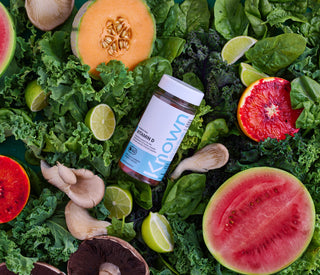Vitamin D is a nutrient that has been in the spotlight in recent years, with more and more people becoming aware of its importance for overall health. Read on to get the lowdown on why this nutrient is so important as we answer your most googled questions on Vitamin D.
What are the benefits of Vitamin D?
Vitamin D has many benefits, including:
- Strong bones: Vitamin D helps the body absorb calcium, which is essential for strong bones.
- Healthy immune system: Vitamin D helps the body fight off infection.
- Cell growth and repair: Vitamin D is involved in cell growth and repair.
How much Vitamin D do I need?
The recommended daily intake of Vitamin D for adults is 15mcg (600 IU). However, some people may need more Vitamin D, such as older adults, people with dark skin, and people who spend little time in the sun.
What are the symptoms of vitamin D deficiency?
Symptoms of Vitamin D deficiency can include:
- Fatigue
- Muscle weakness
- Bone pain
- Frequent infections
- Slow wound healing
- Depression
How do I get Vitamin D?
There are three main ways to get Vitamin D:
- Food: Some good sources of Vitamin D in food include fatty fish, such as salmon and tuna, eggs, and fortified foods such as milk, yogurt, and cereal.
- Sunlight: When your skin is exposed to sunlight, it produces Vitamin D. However, it is important to protect your skin from the sun's harmful UV rays by wearing sunscreen and seeking shade.
- Supplements: Try our tasty Vitamin D Gummies packed with 25 mcg of Vitamin D per serving.
What are good sources of Vitamin D in food?
Some good sources of Vitamin D in food include:
- Fatty fish: Salmon, tuna, mackerel, and sardines
- Eggs
- Fortified foods: Milk, yogurt, cereal, and orange juice
- Beef liver
- Lamb
- Cheese
Can I take too much Vitamin D?
Yes, it is possible to take too much Vitamin D and this can lead to toxicity, however the upper tolerable intake of Vitamin D for adults is very high at 100 mcg (4,000 IU per day).
What are the risks of Vitamin D deficiency?
Vitamin D deficiency can lead to a number of health problems, including:
- Rickets in children: Rickets is a condition that causes soft, weak bones in children.
- Osteomalacia in adults: Osteomalacia is a condition that causes soft, weak bones in adults.
- Osteoporosis: Osteoporosis is a condition that causes bones to become weak and brittle.
- Increased risk of infection: Vitamin D deficiency can weaken the immune system and increase the risk of infection.
- Increased risk of chronic diseases: Vitamin D deficiency has been linked to an increased risk of chronic diseases such as heart disease, stroke, and cancer.
How can I test my vitamin D levels?
You can have your Vitamin D levels tested by your doctor. A simple blood test can measure the amount of Vitamin D in your blood.
What is the difference between Vitamin D2 and Vitamin D3?
Vitamin D2 and Vitamin D3 are both forms of Vitamin D. Vitamin D2 is found in plants and fungi, while Vitamin D3 is found in animal products and produced by the skin when it is exposed to sunlight.
Both Vitamin D2 and Vitamin D3 can be converted into the active form of vitamin D in the body. However, Vitamin D3 is more efficient at being converted into the active form than Vitamin D2.
Our Vitamin D Gummies contain 25 mcg of Vitamin D3 to ensure maximum absorption.
What is the best time of day to take Vitamin D?
You can take vitamin D at any time of day. However, some people find that taking Vitamin D in the morning helps them to absorb it better.
